News
Altcoin News
Altcoin News
Browse all Altcoin related articles and news. The latest news, analysis, and insights on Altcoin.
OKX's Massive Token Burn: OKB Soars, Other Exchange Tokens Rise Too
Cryptocurrency exchange OKX has announced a radical tokenomics update for OKB, its ecosystem's native token. The company announced that it will burn approximately 65.26 million OKB tokens at once. Following this burn, the total supply will be capped at 21 million. This development generated significant market interest, causing a surge in the OKB price.The update, announced on the morning of August 13th, triggered a feeling of FOMO (fear of missing out) among investors. OKB surged more than 170% during the day, reaching $124. According to some market data, the token briefly surged 200% to $134. Radical Change at OKXOKX announced in its announcement that more than 65 million OKB, accumulated through past buyback programs and held in company reserves, will be burned. This will significantly reduce both the circulating and total supply.In addition, the OKB smart contract will also be updated. With the update, token minting and manual burn rights will be completely removed. This move aims to permanently limit the supply and make the token economy more transparent.OKTChain is being discontinuedThe exchange's plans include shutting down its own chain, OKTChain. Existing OKT tokens will be converted to OKB based on the average closing prices between July 13 and August 12, 2025. OKTChain will continue operating until January 1, 2026.According to the timeline announced by OKX:August 13: OKT transactions are suspended.August 13: Withdrawals to OKB's ETH L1 network are closed.August 15: OKT tokens will be automatically converted to OKB.August 15: A one-time OKB burn will be conducted, followed by a permanent burn via an on-chain smart contract.August 18: The OKB smart contract will be updated, removing mint and burn rights.Impact on Other Exchange TokensThe sharp rise in OKB also positively impacted other centralized exchange tokens.Bitget's BGB token rose 15.5% to $4.97,Gate.io's GT token rose 31.1% to $19.16, andBinance's BNB token rose 2.5% to $849.Additionally, OKLink shares, a Hong Kong-listed company owned by OK Group, which is a subsidiary of OKX, rose 26.09%.
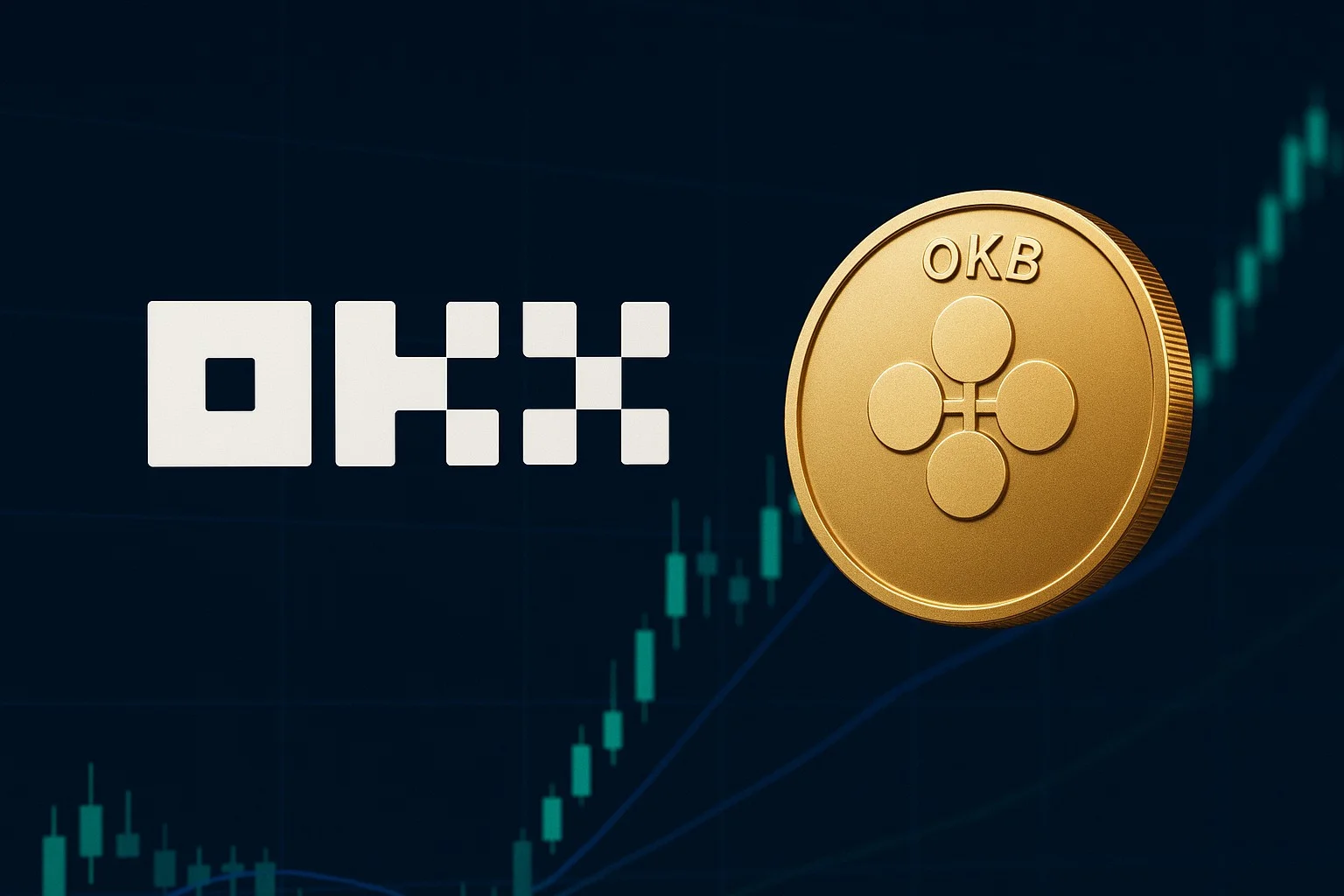
Grayscale Launches Spot ETF Preparations for Two Altcoins
Two new asset registrations, the Grayscale Cardano Trust ETF and the Grayscale Hedera Trust ETF, have appeared on the official corporate registration portal of the US state of Delaware. This development suggests that Grayscale, the Bitcoin and altcoin asset management giant, may be preparing to launch spot exchange-traded funds (ETFs) for Cardano (ADA) and Hedera (HBAR).The registrations in question are dated August 12, and both funds are listed under a general statutory trust structure. Similar registrations have typically been seen in the past prior to S-1 filings with the US Securities and Exchange Commission (SEC). S-1 filings are among the mandatory steps for an ETF to be listed on an exchange.Earlier this year, the SEC officially accepted NYSE Arca's Form 19b-4 filing for Grayscale's spot Cardano ETF and Nasdaq's form for its Hedera ETF. This acceptance marks the first phase of the regulatory review process. First Altcoin ETF RegistrationsThese new registrations mark Grayscale's first altcoin ETF trust registrations on the Delaware portal for Cardano and Hedera. The company previously held investment trust registrations for other altcoins such as Dogecoin, Filecoin, Avalanche, and Bittensor. Grayscale's existing trusts. Source: Grayscale On the same day, Grayscale also announced two new investment trusts offering investment in native tokens of the DeepBook and Walrus projects operating on the Sui blockchain ecosystem. These projects specialize in providing trading and data infrastructure.Altcoin ETF push strengthens in the USAccording to market analysts, these steps are part of an expansion strategy by US asset managers into altcoin-based ETFs. The commercial success of Bitcoin and Ethereum-based spot ETFs is increasing demand from institutional investors for regulated access to a broader range of crypto assets.While Cardano is known for its research-driven development model and emphasis on scalability, Hedera offers an alternative distributed ledger technology focused on institutional use cases. Therefore, approving spot ETFs for both assets could provide investors with secure access through traditional market structures.Positive Regulatory EnvironmentRecently, the regulatory environment in the US has been shifting in favor of these types of products. As previously reported, the SEC's approval of the in-kind redemption mechanism for spot Bitcoin and Ethereum ETFs has paved the way for increased applications for other crypto assets.Furthermore, the SEC, in conjunction with the Commodity Futures Trading Commission (CFTC), is conducting an initiative called "Project Crypto." This project aims to clarify how digital assets are classified under US law. This aims to resolve long-standing uncertainties in the sector by determining which tokens qualify as securities.Last month, Grayscale also confidentially filed an IPO with the SEC.
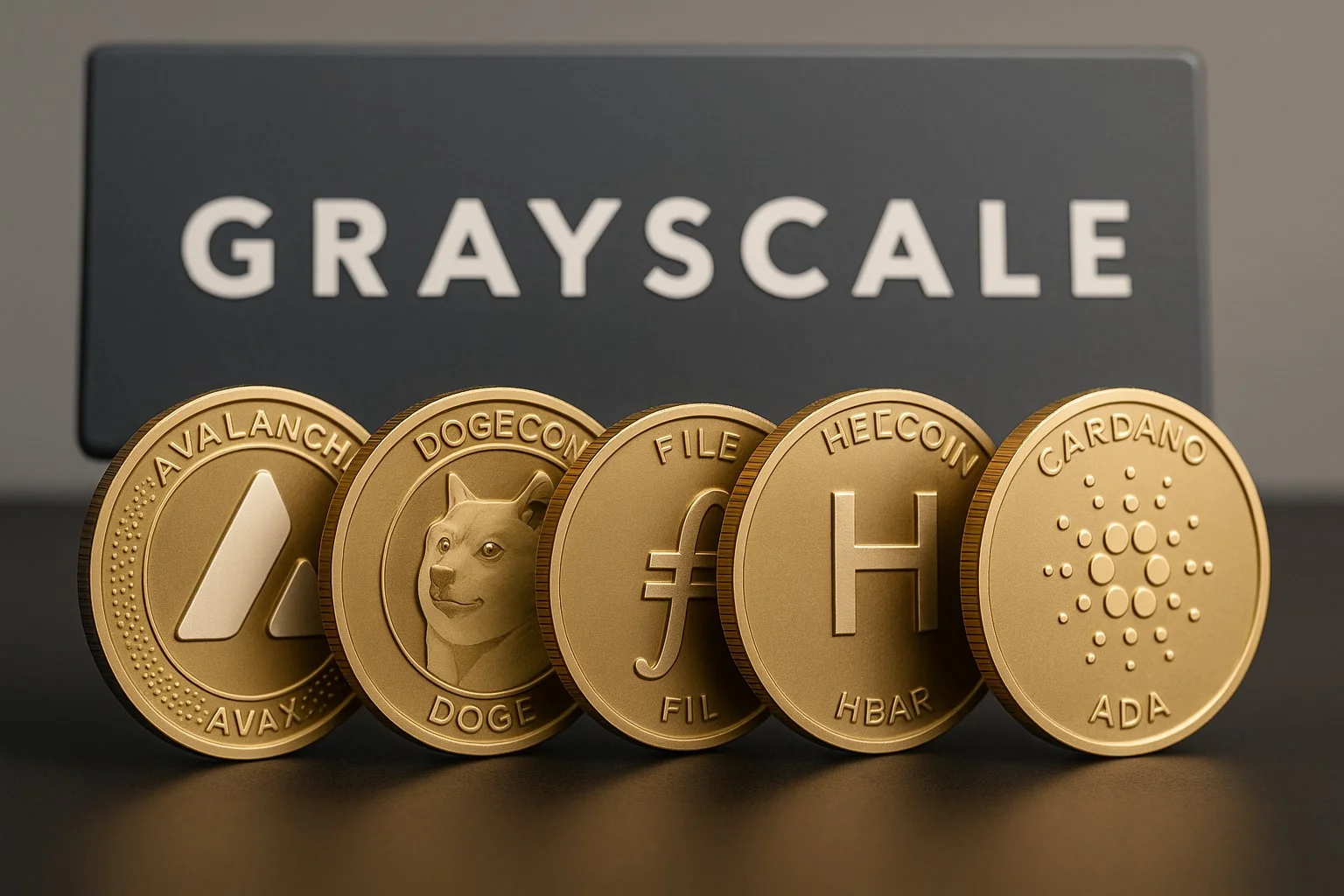
What is Vaulta (A)?
In the years before cryptocurrencies were as widely discussed as they are today, and Bitcoin and Ethereum dominated the market, a new project called EOS emerged. Its 2018 launch was etched in memories with the largest ICO in blockchain history, raising a staggering $4 billion. At the time, EOS was dubbed the "Ethereum killer" for its high transaction capacity, low fees, and user-friendly design. Its attractive smart contract platform for developers and ability to confirm transactions in seconds generated significant excitement in the crypto world. However, over time, the technology evolved, user expectations shifted, new blockchains entered the market, and it became difficult for EOS to maintain its former power.At this point, the community and team behind the project decided on a radical change. We're not just talking about a name change; we're talking about a complete reshaping of the vision. In 2025, EOS returned with a brand new identity: Vaulta. This transformation was like preserving the foundations of an old building and building a modern skyscraper. Vaulta is no longer just a smart contract platform; it sets out to become the banking infrastructure of the Web3 era. Its goal is to bring together traditional financial services such as payment systems, loans, insurance, and investments with decentralized applications on a single chain.At the heart of this new era is the A coin. If you're wondering, "So, what is A coin?", it's Vaulta's native token, symbol A, and the lifeblood of the network. All transactions, smart contracts, governance votes, and financial products run on this token. A special gesture was also made to the EOS community: old EOS tokens were converted into A tokens at a one-to-one ratio. This allowed existing investors to step into the new era without any losses. Leveraging its past experience and community support, Vaulta aims to open a new chapter in the financial world with speed, scalability, and innovative integrations.Now, let's take a closer look at how Vaulta came to be, its technical features, and why it's so talked about.Vaulta's Definition and OriginsEOS, one of the first projects to attract attention in the crypto world, debuted strongly in 2018, a smart contract platform built on a solid financial foundation with a massive ICO. However, as time progressed, expectations and needs shifted, and the community began to wonder, "What were we missing?" As transaction volume and usage declined, the project maintained its reliable infrastructure but was no longer as active in the market. A poster showing the EOS-Vault switch. Then, in 2025, things changed radically: The EOS Network Foundation, with a wisdom-based rebirth, unveiled the Vaulta name and vision. This wasn't just a color change; it was a true strategic pivot. Coins were converted one-to-one to the A token, a transition coordinated with major exchanges like Binance, ensuring users would not lose any assets.Behind this move was a concrete plan: Vaulta aimed to be not just a blockchain, but the core of the Web3 banking ecosystem. To this end, the Banking Advisory Council was established, and experts from organizations like Systemic Trust, Tetra, and ATB Financial came together to shape the intersections between traditional banking systems and Web3.Technically, the Vaulta infrastructure maintains the reliable blockchain architecture of EOS (C++ smart contracts, RAM-based database, IBC compatibility); However, by adding an EVM-compatible layer, exSat and Bitcoin integration, and Antelope (Spring 1.0) technologies that offer instant final confirmations, Vaulta becomes a fortress-like banking backbone.Vaulta has also attracted the attention of institutional investors. For example, World Liberty Financial has pledged $6 million in support of Vaulta out of confidence. Vaulta's WLFI partnership statement. Source: X Vaulta's History: Key MilestonesEvery major project has a history, and Vaulta's story is no different. Its journey, which began as EOS, has been a long one, marked by ups and downs in the crypto world. The intervening years have transformed both the technology and the project's goals. Let's take a look at the key moments of this transformation.2018: The EOS mainnet was launched. It raised approximately $4 billion in funding through one of the largest ICOs in blockchain history.May 2025: The EOS → Vaulta rebranding process was undertaken. Led by the EOS Network Foundation, the project name was changed to Vaulta, and a strategic focus on Web3 banking was announced. As part of this process, existing EOS tokens were converted one-for-one to Vaulta's A token through a formal token swap. The rebranding was supported by the establishment of the Vaulta Foundation and the creation of a Banking Advisory Council comprised of experts from the financial sector. June 2025: Significant technical updates went live on the Vaulta network. The Ethereum Virtual Machine-compatible smart contract platform, called Vaulta EVM, was launched on the mainnet. At the same time, the Bitcoin integration protocol, called exSat, and the Savanna consensus engine were also launched. Thanks to these innovations, Vaulta now supports both Ethereum-based smart contracts and enables financial applications integrated with the Bitcoin network. Savanna consensus reduced block confirmation time to approximately 1 second, enabling instant financial transactions.July 2025: Vaulta made significant strides in cross-chain interoperability. Integration with the Cosmos IBC protocol was completed, allowing Vaulta to transfer data and assets with other blockchains in the Cosmos ecosystem. Furthermore, the Bitcoin bridge connection was established and activated, establishing direct communication between Vaulta and the Bitcoin network. This enabled users to send and receive Bitcoin on the Vaulta platform and seamlessly transfer value between different networks.Why is Vaulta Valuable? What truly makes a project valuable isn't just its technology or name; it's the solutions it offers, the convenience it provides, and the innovations it brings to users' lives. This is precisely where Vaulta stands out. By combining the robust infrastructure inherited from EOS with the Web3 banking vision, it offers a unique experience for both developers and users. Speed, security, cross-chain connectivity, and the ability to bridge the gap between the real world and digital assets transform Vaulta from an ordinary blockchain into a powerful financial ecosystem. Vaulta's key features and advantages can be summarized as follows:1-second transaction confirmation (Savanna DPoS)By combining Delegated Proof of Stake (DPoS) consensus with the advanced Savanna algorithm, Vaulta can finalize blocks in approximately 1 second. This extremely fast confirmation time allows the network to securely process thousands of transactions per second. Thanks to its high transaction capacity and low latency, Vaulta can meet the instant payment and reconciliation needs of financial applications. Ethereum-Compatible EVMVaulta offers a smart contract layer compatible with the Ethereum Virtual Machine. Thanks to the Vaulta EVM, contracts written in Solidity and Ethereum ecosystem applications can be run on the Vaulta network without any modifications. Developers can continue to use familiar tools like MetaMask and easily port their Ethereum projects and dApps to Vaulta. Furthermore, the Vaulta EVM provides a much faster and more user-friendly experience compared to Ethereum, with a 1-second settlement time and lower costs.Bitcoin Integration (exSat Protocol)Vaulta directly interacts with the Bitcoin network through exSat integration. exSat operates as a virtual chain within the Vaulta chain, tracking Bitcoin's UTXO data. This makes it possible to integrate Bitcoin into the Vaulta ecosystem without a bridge or wrapped token. For example, decentralized finance applications collateralized by Bitcoin can be run on Vaulta, generate yields with BTC, and perform real-time BTC transfers. In short, Vaulta combines the power of BTC with smart contracts by making Bitcoin a native asset on its network. The logic behind ExSat. Source: ExSat/Docs Inter-chain communication (Cosmos IBC compatibility)The Vaulta network also excels in interoperability with different blockchain ecosystems. Thanks to its integration with the Cosmos IBC (Inter-Blockchain Communication) protocol, Vaulta can securely and quickly communicate with other IBC-compatible blockchains. This interoperability facilitates the transfer of assets between different networks and the development of multi-chain applications. For example, an asset on Vaulta can be moved to another Cosmos-based chain via IBC, and vice versa. This feature makes Vaulta an important bridge in the multi-chain world.Web3 banking infrastructureVaulta's most valuable asset is its comprehensive infrastructure that combines traditional financial services with Web3 technology. Payment systems, DeFi protocols, digital insurance (Vaulta insurance) products, and tokenized assets (e.g., tokenization of real-world assets like real estate or bonds) can be developed on the network. Vaulta's open-to-enterprise integration design allows banks and fintech companies to integrate blockchain-based solutions into their own services. For example, a stablecoin payment system or microcredit application launched on Vaulta could be compatible with traditional financial institutions. This would enable Vaulta to bring the concept of Web3 banking to life, providing transparency, speed, and accessibility in financial services.Institutional SupportOne of the most significant steps that strengthened Vaulta's vision was the strategic partnership with World Liberty Financial (WLFI). Aiming to develop decentralized financial services in the US, WLFI decided to integrate its stablecoin, USD1, into Vaulta's banking tools. This will allow users within the Vaulta ecosystem to trade USD1 directly. As part of the partnership, Vaulta's local assets were also included in WLFI's "Macro Strategy" reserve. This reserve is a strategic token pool created to provide long-term support to leading crypto projects like Bitcoin and Ethereum that are transforming global finance. This move strengthened Vaulta not only technically but also in terms of liquidity and institutional trust.Who is Vaulta's Founder?Who owns the Vaulta coin? While this question is frequently asked, Vaulta does not have a single founder or owner. The project is governed by a decentralized governance model. The Vaulta Foundation, a nonprofit organization, and 21 community-elected block producers are jointly responsible for the network's governance. This means that the network's decision-making is not controlled by a single person or company, but rather relies on collaboration between the Foundation and the validators elected by token holders.The Vaulta Foundation is led by Yves La Rose, who has led the community-driven rebirth of the EOS project. Yves La Rose, former CEO of the EOS Network Foundation, played a key role in developing the Vaulta vision. The Foundation determines the network's strategic direction by working with advisory boards comprised of developers, community members, and financial industry experts. For example, the Vaulta Banking Advisory Council, comprised of banking and digital asset experts, advises Vaulta on bridging the traditional finance and Web3 worlds and ensuring regulatory compliance (the formation of this board was announced during the rebranding process).The team behind the Vaulta project essentially restructured EOS's existing technological infrastructure and the power of its community to bring this new vision to life. The community push, which began with the establishment of the EOS Network Foundation in 2021, culminated in the creation of the Vaulta name in 2025. During this period, the original EOS development and support team underwent a major transformation to adapt the network to broader financial applications. Consequently, Vaulta is not a project created from scratch, but rather an evolution of EOS with a new identity.Frequently Asked Questions (FAQ)As you read about Vaulta, you may have new questions. Questions like, "What exactly is the difference between it and EOS?", "What does a token do?", or "How does it connect to Bitcoin?" are among the most frequently asked questions in the community. In this section, you can find frequently asked questions and clear, concise answers to help you better understand Vaulta.What is Vaulta and how is it related to EOS?: Vaulta is the rebranded version of the EOS blockchain in 2025. So, the Vaulta network is technically the successor to EOS and continues on its path with a new name and vision. In short, is Vaulta the old EOS? Yes – built on the EOS community and technology, Vaulta is a new version where EOS tokens are converted to A tokens and the project focuses on Web3 banking.What is the Vaulta network used for?: The Vaulta network is used to provide banking and financial services on the blockchain. Its use cases include payment transfers, savings and loan applications, decentralized finance (DeFi) protocols, digital insurance products, and the tokenization of real-world assets. The goal is to make traditional banking transactions faster, more transparent, and more accessible with Web3 technology.What is the A token used for?: The A token is the native cryptocurrency of the Vaulta network and is central to all transactions on the network. To use the Vaulta network, users stake A tokens to reserve resources such as CPU, NET, and RAM; this eliminates the need for separate gas fees when making transactions on the network. Additionally, the A token grants its holders voting rights in governance (e.g., voting for block producers), and thanks to the exSat integration, users who stake their A tokens have the opportunity to earn Bitcoin returns.What is Vaulta EVM and what does it offer developers?: Vaulta EVM is a smart contract environment compatible with the Ethereum Virtual Machine running on the Vaulta network. This allows developers to run Ethereum smart contracts they write with Solidity directly on Vaulta. Vaulta EVM integrates with Ethereum tools (e.g., the Solidity compiler and MetaMask wallet) and offers faster finality (1 second) and lower transaction costs compared to Ethereum, providing developers with ease and speed. How does Vaulta integrate with the Bitcoin network?: Vaulta connects to the Bitcoin network via the exSat protocol and bridge integrations. exSat is a private sidechain that transfers Bitcoin's on-chain UTXO data to Vaulta, making Bitcoin available within the Vaulta ecosystem. This makes it possible to write Bitcoin-powered smart contracts on Vaulta, use BTC in DeFi applications, or earn returns on Bitcoin. Furthermore, this integration is done directly with actual Bitcoin assets, eliminating the need for wrapped BTC (like WBTC), which is typically required.Is Vaulta centralized or decentralized?: The Vaulta network operates with DPoS (Delegated Proof of Stake), a decentralized consensus system. In theory, it is decentralized, with 21 block producers elected by token holders managing the network. However, there are criticisms that in practice, it is not truly decentralized due to the limited number of block producers and the Foundation-led development. However, Vaulta is not owned by a single company but is community-driven, with decisions made collectively through on-chain governance mechanisms.For more content on Vaulta and Web3 banking solutions, follow our JR Crypto Guide series.
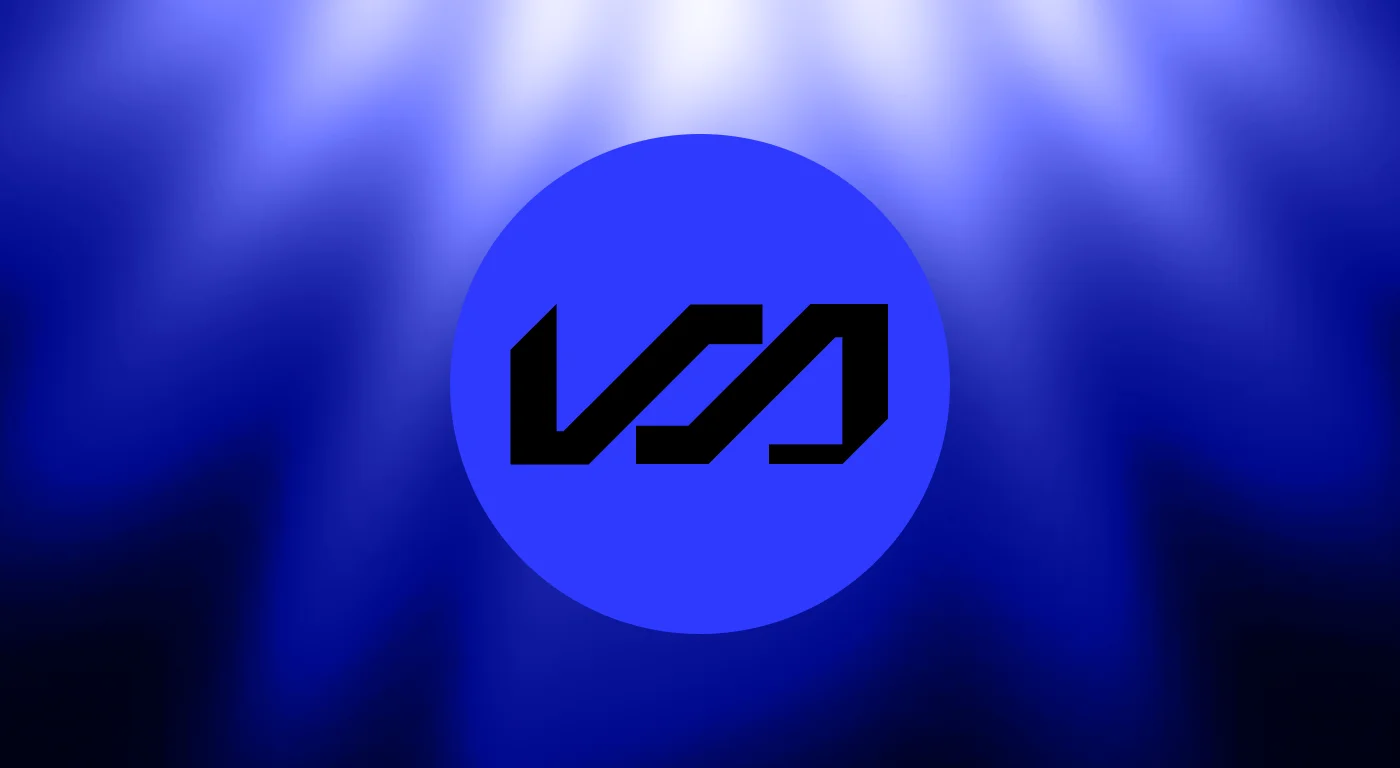
ARB Comment and Price Analysis - August 12, 2025 | JrKripto
ARB Technical OutlookA very wide and regular falling wedge formation is striking on the ARB weekly chart. The formation's inception dates back too far to be visible even on the daily chart, clearly demonstrating the long-term nature of the structure.In the current outlook, the price is trading at $0.4371. Although a recent attack above $0.4515 failed to sustain itself and retreated back to horizontal support. This area is critical for determining short-term direction.Horizontal levels of $0.4515 and $0.5046 act as short-term resistance. Daily closes above $0.5046, in particular, could clarify the falling wedge breakout. In this scenario, the technical formation target of $2.4250 would resurface in the medium to long term.On downward movements, support levels of $0.3558, $0.3453, and the channel lower band of $0.2849 should be monitored. Wedge Formation Falling on a Weekly Basis Summary:Price: $0.4371, close to horizontal resistance levels within a wedge formationFormation: Long-term falling wedgeTarget in case of an upward breakout: $2.4250Short-term resistance levels: $0.4515 → $0.5046 → $0.5475Support levels: $0.3558 → $0.3453 → $0.2849This analysis does not constitute investment advice and focuses solely on support and resistance levels that may present potential short- to medium-term trading opportunities based on market conditions. All trading and risk management decisions are solely the responsibility of the user, and the use of stop-loss is strongly recommended.
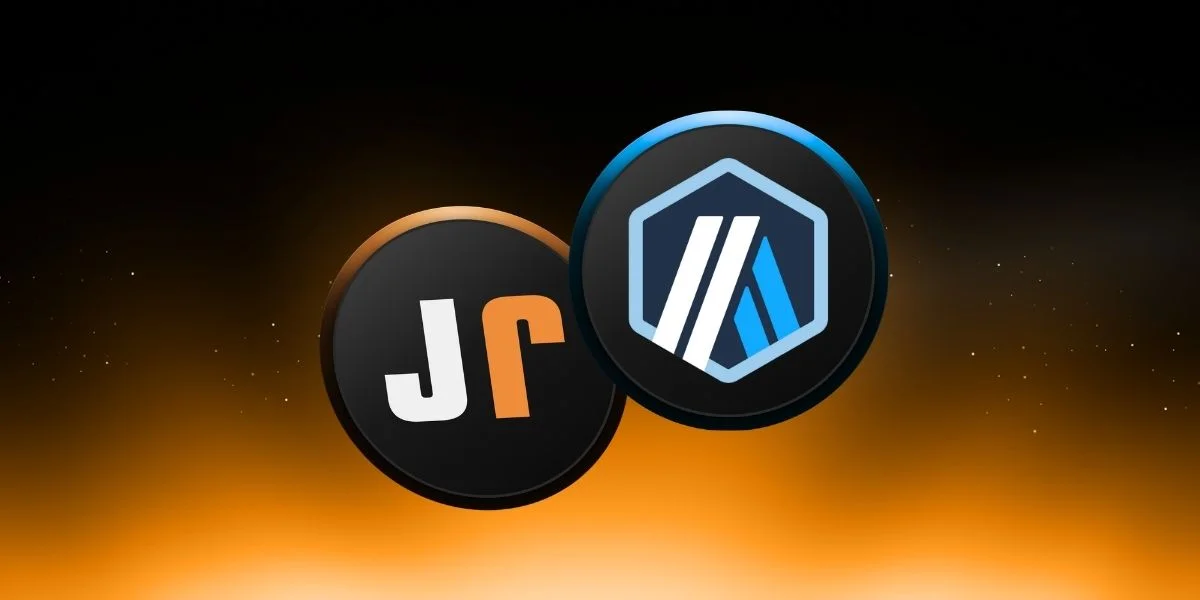
Stablecoin Giant Circle Unveils Its Own Blockchain: Here's the Launch Date
Circle, the US-based publicly traded company behind USDC (USD Coin), the world's second-largest stablecoin by market capitalization, is preparing to launch its own Ethereum Virtual Machine (EVM)-compatible Layer-1 blockchain. The company shared details of this new network, dubbed "Arc," on Tuesday, as it announced its second-quarter (Q2) 2025 financial results.Arc aims to provide an "enterprise-grade foundation" specifically for stablecoin payments, foreign exchange (FX) transactions, and capital markets applications. According to Circle, Arc is being developed entirely as a USDC-focused infrastructure, with USDC as the network's native gas token. This will allow users to pay transaction fees directly on the network with the stablecoin.Arc's public testnet launch is planned for this fall. The network will offer an integrated stablecoin exchange engine, sub-second settlement, and optional privacy features. Circle emphasized that Arc will be fully integrated with the company's existing platforms and services, as well as compatible with the 24 different partner blockchains it supports.Circle Announces Net LossAccording to Circle's financial data, the company's total revenue and reserves increased by 53% year-over-year, reaching $658 million. Other revenue lines saw a remarkable 252% increase, largely driven by growth in subscription, service, and transaction revenue.USDC supply also gained significant momentum during this period. The supply, which had increased by 90% year-over-year to $61.3 billion, increased by another 6.4% to $65.2 billion as of August 10th. USDC's total market capitalization currently stands at approximately $65.6 billion, with the largest supply ($42.6 billion) held by the Ethereum network.Despite this, the company reported a net loss of $482 million due to non-cash expenses of $591 million related to the IPO. Of these expenses, $424 million was from stock-based payments and $167 million from fair value increases on convertible debt. Adjusted EBITDA increased by 52% to $126 million.“The future of stablecoin finance”Circle CEO and Co-founder Jeremy Allaire stated that the second quarter was a critical period for the company as the first quarter after its IPO. “It’s exciting to see the growing adoption of our platform across different sectors and globally.” Allaire also emphasized that the $1.2 billion IPO, which closed in June, was a turning point in the adoption of stablecoins.The company also highlighted the GENIUS Act, signed by President Trump last month, which established a federal regulatory framework for payment stablecoins. Circle stated that this legislation legally establishes the compliance standards it has long championed and strengthens its position as a regulated stablecoin issuer. Following these developments, Circle shares rose 6.2% in premarket trading Tuesday.

TON Comment and Price Analysis - August 12, 2025 | JrKripto
TON Current Technical OutlookOn the broader timeframe, TON continues to maintain its ascending channel structure. The lower channel support has remained strong, as noted in the previous analysis. Notably, during the sharp pullback at the end of June, the price once again found support at this trendline and reacted upwards. TONE Wide Angle View Following this reaction, the price has managed to hold above the $2.76 level. This zone remains significant as both the lower channel boundary and a key horizontal support. In the current outlook, the price has broken above the $3.31 resistance and is attempting to sustain above it. Historically, this level has been tested multiple times and has acted as a strong resistance with notable selling pressure. Sustained price action above this area could signal a clearer shift towards an upward trend.If the movement within the channel continues, the next short-term target will be the $3.50 resistance. A break above this level could open the way towards:$4.13 (major horizontal resistance)$4.87 – $5.16 (medium-term target zone)Channel upper boundary at $6.00+In the event of a pullback:First support: $3.10 – $2.76 rangeBelow this area, $2.18 should be monitored as a critical support.These analyses, which do not constitute investment advice, focus on support and resistance levels that may present short- to medium-term trading opportunities under current market conditions. However, all trading and risk management decisions remain the sole responsibility of the user. The use of stop-loss orders is strongly recommended for any positions taken based on this analysis.
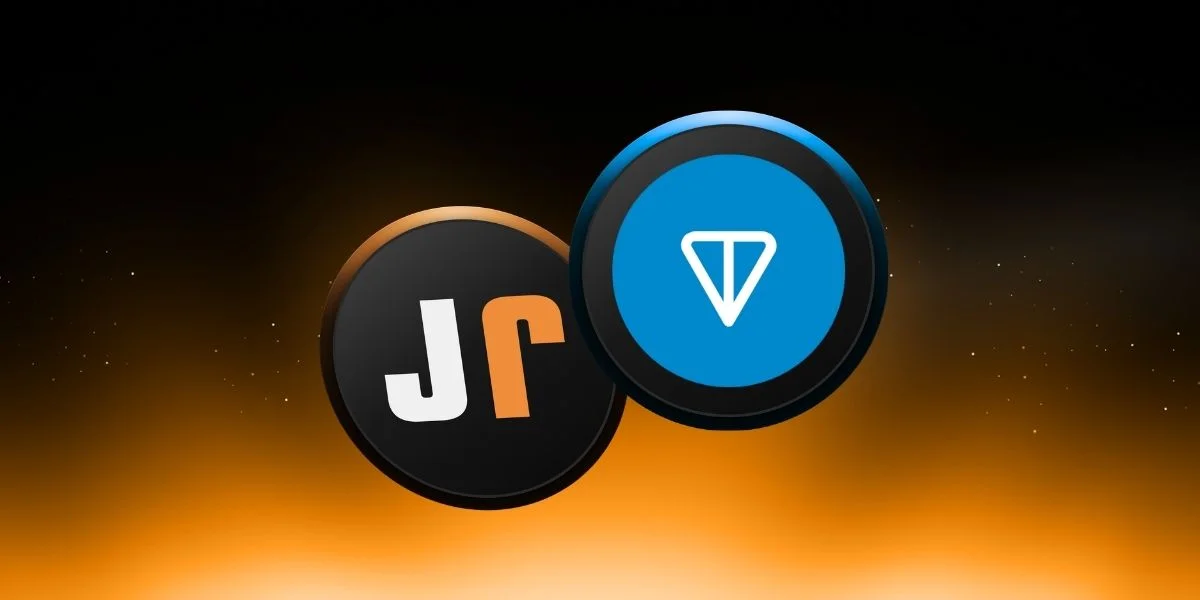
Shocking Development in Monero: 51% Attack Successful, XMR Price Drops
Privacy-focused cryptocurrency Monero (XMR) is experiencing one of the most serious crises in its history. According to statements by both SlowMist founder Yu Jian and Charles Guillemet, CTO of hardware wallet manufacturer Ledger, a 51% attack on the Monero network has been successfully carried out.Cybersecurity expert Yu Jian stated that a mining pool called Qubic has theoretically reached the power to rewrite the blockchain on Monero's network. This would allow attackers to double-spend and censor transactions. Jian stated that the attack was quite costly, and the economic gain for the attackers is unclear at this stage.Ledger CTO Guillemet stated that this development has been unfolding gradually over the past few months. According to Guillemet, Qubic has been increasing the hashrate on the Monero network for a long time and has now gained majority control of the network. "As of this morning, I detected a major reorganization in the chain. This is a clear indication that the attack was successful," Guillemet said, emphasizing that Qubic, with its current power, can reorganize the blockchain as it wishes.Small Chain Attacks the Giant Monero NetworkQubic, a separate blockchain project in its own right, is ranked 222nd on CoinMarketCap. With a market capitalization of approximately $300 million, it is effectively taking control of Monero, which currently has a market capitalization of approximately $6 billion. Guillemet described this as "a small chain taking control of a massive network." Ledger CTO stated that the daily cost of such an attack is around $75 million, but that it could destroy trust in the Monero network overnight. If other miners lose their incentives and abandon the network, Qubic is likely to remain the sole XMR miner. In this scenario, Monero's chances of recovery would be extremely limited. Market reaction was harshAfter news of the attack spread, XMR price fell by as much as 9 percent. The price fell from $276.29 to $252. Experts say that Monero currently has few defenses against this attack and that it is "likely" that Qubic will take full control of the network. Monero, launched in 2014, is known for offering completely anonymous and untraceable transactions. However, due to its privacy-focused nature, it has been delisted by many major centralized exchanges. This attack represents a serious blow to Monero, which already has limited access.Experts emphasize that such 51% attacks are not technical attacks, but economic ones. Qubic must cover high costs to sustain this operation in the long term. However, if the goal is simply to gain control of the network, the attack could completely change Monero's fate within a few days. As the crypto community watches the developments with concern, relevant platforms and exchanges have been warned to be more vigilant against potential threats in Monero.
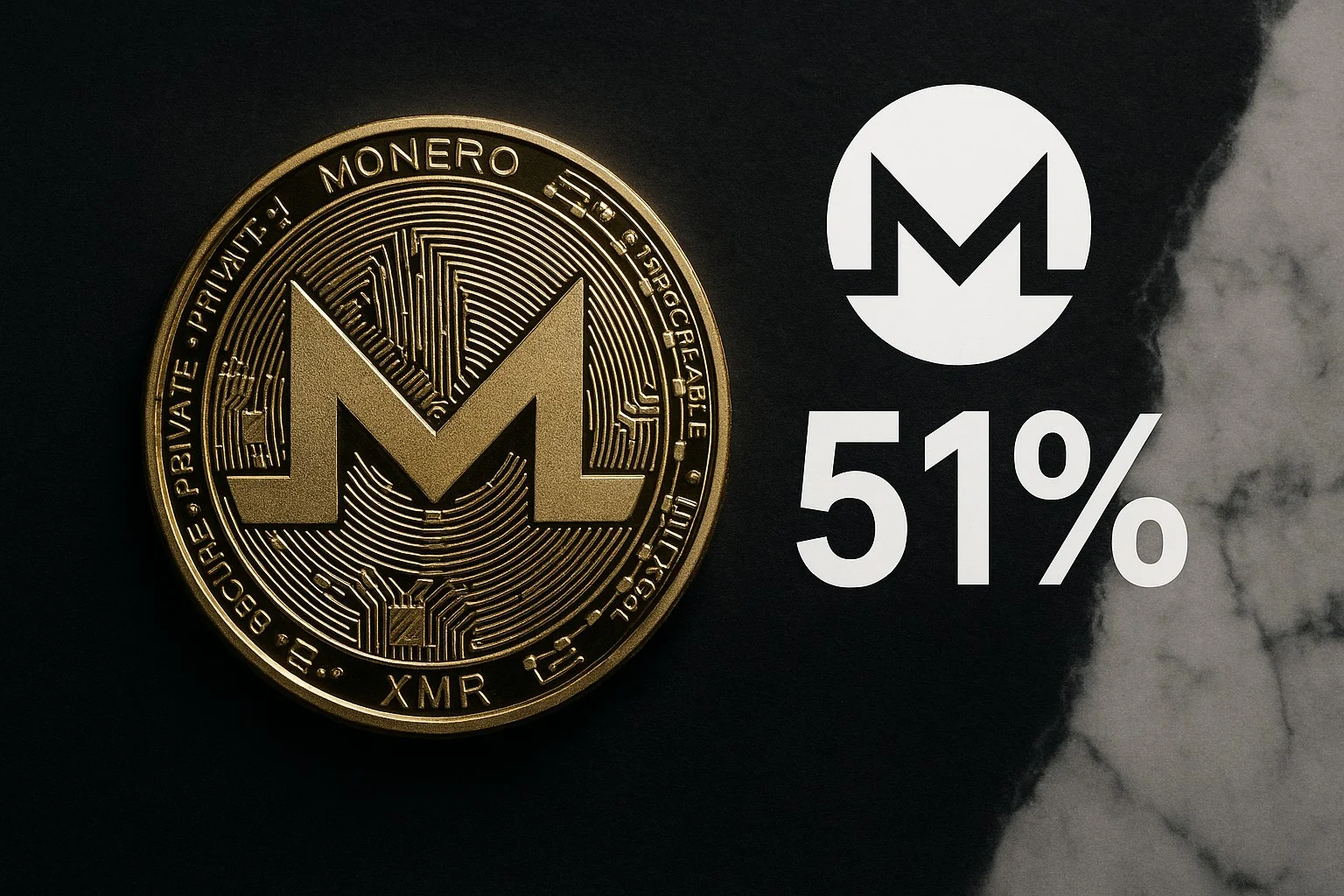
A New Era in Jeff Bezos's Company: Space Ticket with BTC, ETH and SOL
Blue Origin, the space exploration company owned by billionaire entrepreneur and Amazon founder Jeff Bezos, will now accept cryptocurrency payments. The company announced on August 11th that it has partnered with leading payment company Shift4 Payments, Inc. (FOUR), allowing customers to pay for space travel using popular cryptocurrencies like Bitcoin, Ethereum, Solana, and stablecoins like USDT and USDC.This new payment option will be available on Blue Origin's New Shepard rocket, used for commercial space flights. Customers can connect leading crypto wallets like Coinbase (COIN) and MetaMask to make payments quickly, directly, and securely."Together with Blue Origin, we are making space accessible to explorers around the world. This partnership will allow adventurers to easily and seamlessly book the trip of a lifetime, regardless of their preferred payment method," said Shift4 CEO Taylor Lauber.The new payment option is effective immediately, responding to the growing demand for fast and secure crypto payments. To date, more than 75 people have crossed the Kármán Line (the internationally recognized boundary of space) into space with New Shepard.Well-known figures in the crypto world are also showing interest in these flights. TRON founder Justin Sun recently flew into space with Blue Origin. There was speculation that Binance founder Changpeng "CZ" Zhao would also participate in a similar flight. However, CZ said he only plans to fly after Tesla owner Elon Musk goes to space.Crypto and "Space"The crypto community has been interested in space projects for years. Some blockchain projects have invested in satellite communication research, startups have funded space technologies through token sales, and companies like SpaceX have engaged in crypto-related PR. Blue Origin's crypto payment integration further strengthens the connection between these two high-tech fields.Blue Origin's partner, Shift4, is a veteran of cryptocurrency transactions. The company, which acquired The Giving Block in 2022, expanded its Web3 reach last June by partnering with Chainlink and Mastercard. Thanks to this partnership, customers worldwide will be able to book space tickets with crypto whenever they want.While the estimated $28 million in ticket prices makes this move seem more like a prestige and PR stunt, the acceptance of crypto payments in such a high-level service is considered a remarkable development in the industry.
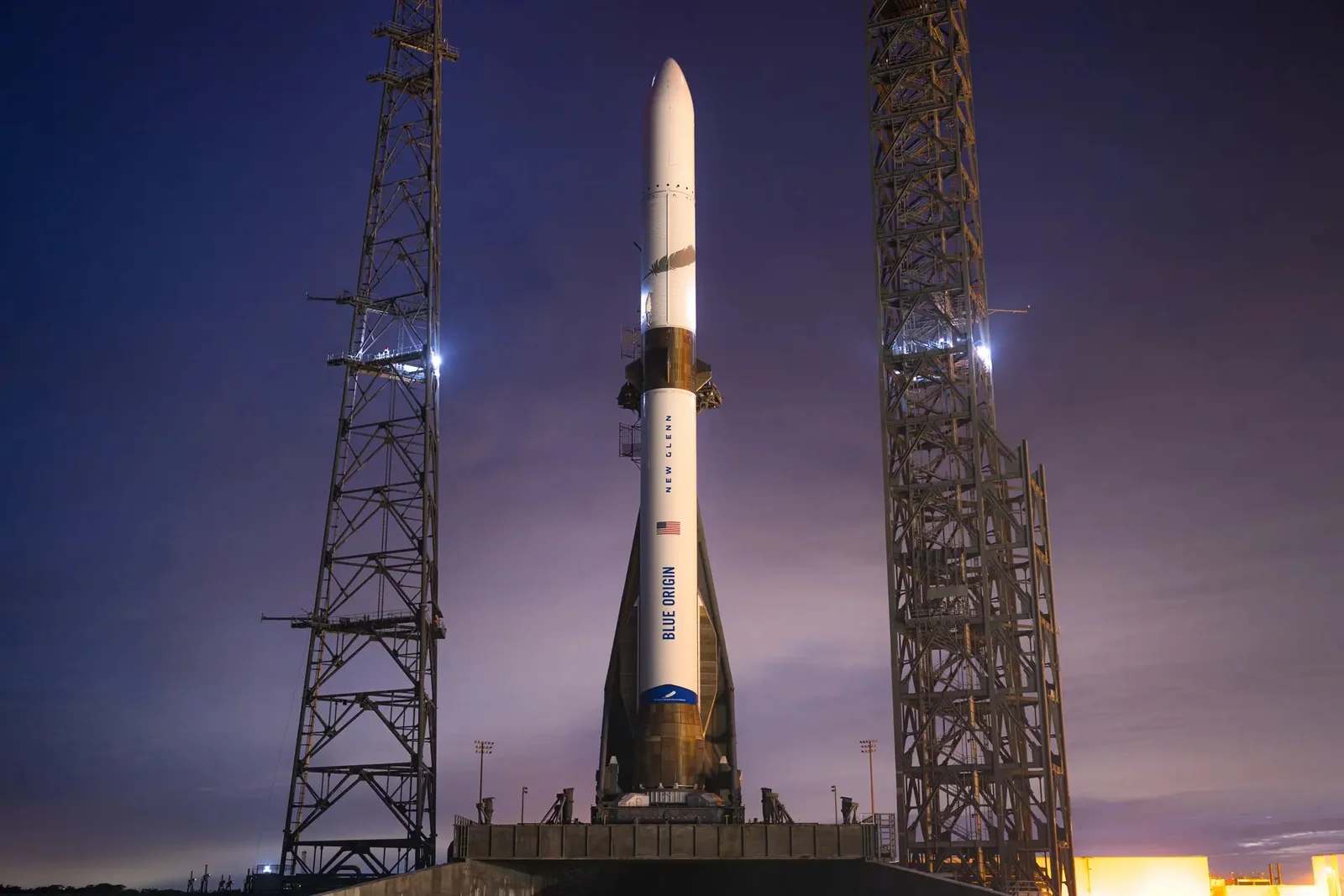
US Company Buys Surprise Altcoin at a Discount: Price Drops
US-based Heritage Distilling Holding Company (CASK) is taking a significant step in the cryptocurrency world, becoming the first publicly traded company to adopt Story Protocol's native asset, the IP token, as its primary treasury asset. With the support of a16z crypto and several prominent investors in the sector, the company will launch a treasury strategy with a total value of approximately $340 million.This plan is being implemented as part of a $220 million private equity raise (PIPE) expected to close on August 13th. The transaction is funded by $100 million in cash and $120 million in IP tokens. Investors include well-known names such as Amber Group, Arrington Capital, dao5, Hashed, Mirana Ventures, Neoclassic Capital, Open World, Polychain Capital, Selini Capital, Stix, and Syncracy Capital. Cantor Fitzgerald & Co. and Roth Capital Partners are acting as co-placement agents and financial advisors, while Open World is advising on the treasury structure. Heritage will use $82 million of the proceeds to purchase IP tokens from the Story Foundation. The purchase price was set at $3.40 per token. At the time the acquisition was announced, the altcoin was trading at approximately $6.45. This represents a 47.3% discount to the coin's original price. The Story Foundation plans to use all net proceeds from this sale to repurchase IP tokens from the open market within 90 days.Once the transaction is complete, Heritage will hold approximately 52.5 million IP tokens in its treasury. At current prices, these assets have a total value of approximately $340 million. Additionally, several strategic partners will contribute additional IP tokens in exchange for common shares or pre-funded warrants from Heritage.What are IP Tokens and Story Protocol?So, what is the IP token that Heritage will add to its treasury? IP is Story Protocol's native token, running on a Layer 1 blockchain network that tokenizes intellectual property. The platform integrates copyrights with licensing and attribution mechanisms in the NFT format. This allows artists, companies, and even AI systems to record and remix their content, generating revenue within legal compliance. Story has collaborated with famous names and brands such as Justin Bieber, BTS, Blackpink, Adidas, and Crocs.Heritage CEO Justin Stiefel stated that this step gives the company "early access to the tokenized intellectual property economy." Story Foundation Director Matt Shaw stated that the structure offers investors equity access to IP without directly holding tokens, demonstrating "responsible governance."Under the agreement, PIP Labs founder and Story creator Seung Yoon "SY" Lee will become chairman of Heritage's advisory board. Additionally, Phil Blows, co-founder of AQRU and B2 Capital Management, will serve as investment director, and PIP Labs CFO Ben Sternberg will serve as strategic finance advisor.IP price declinesThe IP token currently trades with a market capitalization of approximately $1.6 billion. The IP token is currently trading at $5.55, down approximately 18.5% in the last 24 hours. The price has fluctuated between $5.56 and $6.81 on the day. The decline is believed to be driven by news of Heritage's potential buyback.

PENDLE Comment and Price Analysis - August 11, 2025 | JrKripto
PENDLE Technical Outlook Trending Theme PENDLE has been trading within a contracting price structure for an extended period. This pattern has formed through the convergence of both descending and ascending trendlines, resulting in progressively narrower price action.Currently, the price is attempting to hold just above the horizontal resistance area at $5.13. This level is particularly important as it sits near the upper boundary of the contracting structure, making it a potential breakout point. A strong upward breakout with volume could open the way towards $6.07 and $7.38 as the next target levels.On the downside, the $4.59 – $4.33 range stands out as the first support zone. A close below this area would increase the risk of a pullback towards the lower boundary of the contracting formation. In such a case, $3.67 and $3.11 would serve as notable interim supports.Given that contracting structures often resolve with a strong breakout, volatility for PENDLE is expected to increase in the coming period.These analyses, which do not constitute investment advice, focus on support and resistance levels that may present short- to medium-term trading opportunities under current market conditions. However, all trading and risk management decisions remain the sole responsibility of the user. The use of stop-loss orders is strongly recommended for any positions taken based on this analysis.

What is GateToken (GT)?
In its early years, the cryptocurrency market was largely operated through simple exchanges that only allowed trading. Over time, as these exchanges grew, they began developing different solutions to further connect users to their ecosystems and increase trading volume. One of the most effective of these solutions was the issuance of platform tokens by exchanges. Platform tokens not only provided direct benefits to users, such as reduced transaction fees, but also made the exchanges' own ecosystems more sustainable. Following examples like Binance's BNB and OKX's OKB, Gate.io made a similar move.GateToken (GT), a name we frequently hear in the cryptocurrency world, is also known as "Gate.io coin" or "GT coin." If you're wondering what GT coin is, what Gate.io coin is, and what it does, we can say that it's a versatile token that offers various advantages to users within the Gate.io ecosystem and operates as the native cryptocurrency of the GateChain blockchain network. Launched in 2019, GT was fully integrated with Gate.io's own network, GateChain, in 2020 and has since played a significant role in both the exchange and the blockchain. In this guide, we will examine what GT is, how it emerged, why it is valuable, and in what areas it is used.Definition and Origins of GateTokenGateToken (GT) is the official platform token of the Gate.io exchange, launched to power its ecosystem. It was developed to provide Gate.io users with additional benefits and privileges. The GT token was first announced in April 2019 and launched immediately thereafter. At that time, Gate.io experimented with a different system called "Gate Points" to distribute GT. Users could purchase Gate Points at Gate.io's sale event and exchange them for GT tokens. At the end of this process, on April 21, 2019, the GT token was listed and traded on the exchange with GT/USDT and GT/BTC pairs. GT's technical infrastructure is based on the GateChain blockchain developed by Gate.io. The mainnet went live in 2020, and GT became the network's native cryptocurrency. This means that the GT token isn't just a utility token offering transaction fee discounts or platform advantages on Gate.io; it's also used as a governance and payment tool on GateChain. So, what is GateChain? GateChain, an Ethereum-compatible Layer-1 (EVM-compatible) platform, stands out with its fast transaction times, low fees, and security-focused architecture. GT tokens are used both to pay transaction fees and to contribute to network security through staking. How Gatechain works In the Gate.io ecosystem, GT is like a key that allows users to participate more actively in the platform. It provides access to various products and services, discounts on transaction fees, and increases interaction within the community.In short, GateToken was designed to provide Gate.io users with on-platform benefits and play a central role in Gate.io's blockchain project, GateChain. The GT token offers privileges such as exchange discounts, pre-sale opportunities, and voting, while also serving as GateChain's native asset, playing a crucial role in the blockchain infrastructure.GateToken's History: Key MilestonesSince its launch in 2019, GateToken has been at the core of both the Gate.io platform and the GateChain blockchain. As cryptocurrency exchanges developed their own platform tokens, GT quickly attracted attention with the advantages it offers to Gate.io users. Over the years, significant developments have been made in both the technical infrastructure and its application areas; These included the launch of the GateChain mainnet, the launch of GT's staking and governance features, Launchpad events, and regular token burn programs. As the GateToken and Gate.io ecosystems grew together, GT strengthened its role within the exchange and became an integral part of the platform's long-term strategy. Below, you can find the most important milestones in the history of GT coin, chronologically.2013: The Gate.io exchange (originally known as Bter) was founded. Founder Han Lin laid the foundation for a platform that prioritized user security and innovation.2019: The GT token was announced and launched as the platform token. The first GT distribution was made through the Gate Points campaign in April 2019. GT coin was listed on the exchange on April 21, 2019.2020: Gate.io launched the mainnet of its own blockchain, GateChain. In March 2020, GT officially became Gate.io's platform token and GateChain's native token. This began using GT as a means of paying transaction fees and staking on GateChain.2022–2023: The GT token's use within the Gate.io ecosystem significantly increased. During these years, GT was heavily used in features such as Launchpad (Startup) sales, HODL & Earn programs, Lending services, and community votes. The importance of GT was reinforced by requiring GT holdings to participate in IEO/Startup events. GT holders contributed to governance by participating in votes on projects to be listed on Gate.io.2024: The reduction of the GT token supply continued through a regular burn program. Since 2020, Gate.io has implemented a policy of buying back and burning GT from the markets with a portion of its profits. As of 2024, the circulating supply of GT coins has dropped to approximately 120 million. This year, GT's liquidity and usability have further increased with Gate.io's growing user base.Why is GateToken Valuable?The value of GT as an exchange token stems from both the advantages it provides on the Gate.io platform and its functionality on GateChain. What are the benefits of the GT token? Here are the key elements and uses that make GateToken valuable:Trading Fee DiscountsOne of the most well-known advantages of holding GT on Gate.io is the discount on trading fees. Depending on the amount of GT you hold, you pay progressively lower commissions on spot, futures, and margin transactions. For active traders, these discounts translate into significant savings over time. Moreover, it's not just about commission discounts; the amount of GT you hold also determines your VIP level on Gate.io. As your VIP level increases, your trading fees decrease, and additional platform privileges become available.Launchpad and Early AccessThe GT token is the key to early investment in new projects on Gate.io's Startup (Launchpad) platform. Participation generally requires a certain average balance of GT coins in your wallet. Users who meet this requirement can participate in pre-sale (IEO) events for new projects before others. In some events, GT holders can even earn free airdrops of listed coins or purchase them at a discounted price. Holding GT gives you the opportunity to invest in high-potential projects before they're listed on Gate.io.HODL & Earn (passive income)GateToken offers the opportunity to earn passive income through staking and various earning programs. In the HODL & Earn or Earn section of Gate.io, you can lock your GTs for a certain period and earn interest. On the GateChain side, users who stake using the Proof-of-Stake (PoS) mechanism are rewarded with block rewards for contributing to the security of the network. While returns may fluctuate periodically, Gate.io offers incentive programs, allowing long-term GT investors to earn additional income.Lending and other financial servicesGate.io also offers Crypto Lending, where users lend their assets and earn interest. It's possible to use GT tokens in this area; You can lend GT and earn interest, or you can borrow various cryptocurrencies using GT as collateral. GT is also useful in Gate.io's Liquidity Mining and Launchpool sections. By providing liquidity, you can earn rewards from newly issued tokens, allowing you to passively invest your GT holdings.Governance and Voting RightsGT holders have a direct say in how the Gate.io ecosystem is shaped. GT is used in voting for newly listed coins, generally meaning 1 GT = 1 vote. Users vote for the projects they support by locking their GT and, in return, often receive airdrop rewards in the tokens of the projects they vote for. Similarly, GT acts as a governance token for network upgrades or technical changes affecting GateChain's future, with community members contributing to decisions by voting.Deflationary Supply ModelGT's total supply is planned to decrease over time. Gate.io regularly conducts token burns to maintain and strengthen the value of its platform token. The first burn in 2019 marked a significant step; 700 million of the initial 1 billion supply were burned, bringing the total to 300 million. In subsequent years, a percentage of the profits were used to buy back and burn GT. For example, since September 2020, Gate.io has been buying and burning GT with 15% of its profits each quarter. By June 2022, over 151 million GT had been removed from circulation. By 2025, this number had decreased further, leaving approximately 120 million GT in circulation. GT burn chart This deflationary model continually reduces the supply, making remaining GTs more valuable and positively impacting the token's price in the long run. You can see the GT token's price performance since its launch in 2019 in the chart below and on this page: Increasing Use Cases and LiquidityGate.io's ever-growing user base and diverse range of services are constantly expanding the GT token's use cases. As new features and campaigns are introduced to the platform (e.g., Gate Pay integrations, NFT marketplace advantages, or DeFi applications on GateChain), GT is integrated into these areas, providing additional benefits. Furthermore, GT isn't limited to Gate.io; it's also traded on other major exchanges like Huobi and Bitfinex. This increases its liquidity and facilitates adoption by reaching a wider investor base. Gatechain ecosystem In short, GateToken's value is determined both by its advantages at Gate.io and its significant role within GateChain. Owning a GT is like having a special membership card within the Gate.io ecosystem; you benefit from discounts and exclusive opportunities. Moreover, this card is one of the most critical components of the GateChain blockchain.Who is the Founder of GateToken?So, who is the GT coin? The GT token is backed by Dr. Han Lin, founder and CEO of Gate.io. Han Lin (also known as Lin Han in some sources), who founded Gate.io in 2013, is an early player in the crypto world and a strong advocate of blockchain technology. The GT token officially launched under his leadership in 2019.While GT's technical development is led by Gate.io's engineering team, the project focuses on community participation. User feedback is considered in management and development decisions, and GT holders have direct input through their voting rights. Therefore, while Gate.io is the founding team, the true long-term owner of the project is seen as the community.The GateChain blockchain is also being developed by the same team. Han Lin and his team built GateChain with innovative solutions focused on protecting user funds (e.g., the Vault Account system to prevent theft). The GT token, which runs on this robust infrastructure, is a project that perfectly reflects Gate.io's vision. Thanks to Han Lin's leadership, Gate.io and the GT token have established themselves as some of the most well-known platform tokens in the industry today.Frequently Asked Questions (FAQ)You may have many questions about GateToken. In this section, we've compiled concise and clear answers to the most frequently asked questions by users. You can find basic information here, from what GT does to the staking process.What is GateToken and what does it do?: GateToken is the platform token of the Gate.io exchange and a cryptocurrency that offers various advantages to its users. The GT token offers many functions, including transaction fee discounts, priority participation in Launchpad/Startup sales, staking for passive income, and payment of transaction fees on the GateChain network. In short, GT serves a dual role as both a reward/perk tool for the Gate.io ecosystem and the native currency of the GateChain blockchain.What network does the GT token operate on?: The GT token operates on its own blockchain, GateChain, developed by Gate.io. The GateChain network is a high-speed blockchain with an Ethereum-compatible (EVM) infrastructure, and GT is its native token. Additionally, GT was initially created as an ERC-20 token on Ethereum, but with the launch of GateChain, its primary use became the GateChain network.How to stake the GT token: There are several ways to stake the GT token. The first is to lock GTs in your account for a certain period and earn daily/monthly interest using products like HODL & Earn or GT Staking on the Gate.io exchange. The second method is to stake GT by becoming a validator on the GateChain network or delegating it to a validator. By locking your GT to contribute to network security through GateChain's Proof-of-Stake mechanism, you can earn additional GT by earning a share of block rewards and transaction fees. Staking operations on the platform are generally carried out through user-friendly interfaces, and you can unstake at any time.Is the GateToken supply limited, and how does the burn process work?: Yes, the GT token supply is limited and even decreases over time. The initial maximum supply was set at 300 million GT (1 billion were created in the initial issuance, and 700 million were burned immediately, reducing the actual supply to 300 million). Gate.io conducts regular token burns to maintain the value of GT. These burns typically involve Gate.io buying back GT from the market with a portion of its platform revenues and permanently removing these purchased tokens from circulation. For example, GT is bought back and burned with 15% of the profits earned each quarter, and this program has been ongoing since 2019. As a result, the circulating supply of GT is constantly decreasing (deflation), and this makes the remaining tokens scarcer, positively impacting the price in the long run.What advantages does GT offer Gate.io users?: Owning GT tokens offers Gate.io users many advantages. First, they pay lower commissions when trading thanks to reduced transaction fees. Users who hold a certain amount of GT can upgrade their VIP membership level on the exchange and benefit from various privileges, from withdrawal limits to enhanced customer service. GT also serves as a key to participating in Gate.io's Startup (Launchpad) events, granting priority access to new token sales and participating in free airdrops. Furthermore, GT holders can participate in voting for projects to be listed on Gate.io, thus contributing to their success. In addition, GT holders can participate in voting for projects to be listed on Gate.io, thus having a say in the platform's development. In short, GT functions like a combination of a discount coupon, membership card, voting rights, and a passive income tool for a user in the Gate.io ecosystem.What's the difference between GateChain and GT?: GateChain is the name of the blockchain network developed by Gate.io; GT is its native cryptocurrency. In other words, GateChain is the technological infrastructure on which smart contracts run and transactions occur (think of it like the Ethereum network). The GT token, like Ether (ETH) on the Ethereum network, is the digital asset used for transactions on GateChain, used to pay fees and manage the network. When transactions are made on the GateChain network, fees are paid in GT, network validators are rewarded in GT, and network security is ensured by staking GT. In short, GateChain is the platform itself, while GT is the fuel and means of transferring value.Follow our JR Kripto Guide series for more information on exchange tokens, platform benefits, and on-chain governance solutions.

AVAX Comment and Price Analysis - August 11, 2025 | JrKripto
AVAX Technical OutlookAVAX has been moving within a broad descending channel for an extended period, with the lower, middle, and upper bands of the channel still maintaining their technical validity.Currently, the price is trading just above the horizontal resistance at $23.80. The $22.40 - $23.80 range is a critical zone, acting both as a horizontal support-resistance flip area and a key region based on previous swing highs and lows. Sustained price action above this zone would keep the upside potential intact, increasing the likelihood of a move toward the upper band of the channel.The upper band of the channel overlaps with the $30.20 – $32.91 resistance zone. This zone will serve as a strong barrier in any potential upward wave. A decisive breakout of this level, supported by strong volume, would also mark an upward break of the descending channel structure, opening the door for a medium-term bullish trend.On the downside, a drop below $22.40 would bring the $20.00 level into focus as the first support. Below that, $18.74 should be monitored as a critical defense line. Closing below these levels could increase the risk of a deeper pullback toward the channel’s lower band. AVAX Current View Summary:Price: $24.18, trading near the middle-upper band of the descending channelSupport zone: $22.40 – $23.80 (holding above is bullish)Resistance: $30.20 – $32.91 (overlaps with the channel’s upper band)Lower supports: $20.00 → $18.74Overall structure: Still within the descending channel but approaching a key resistance area. Sustaining above $23.80 strengthens the bullish case, while a break above $30 could signal a trend reversal.This analysis does not constitute investment advice. It focuses on support and resistance levels that may offer potential short- and medium-term trading opportunities depending on market conditions. Trade execution and risk management remain entirely the responsibility of the user, and the use of stop-loss orders is strongly recommended.
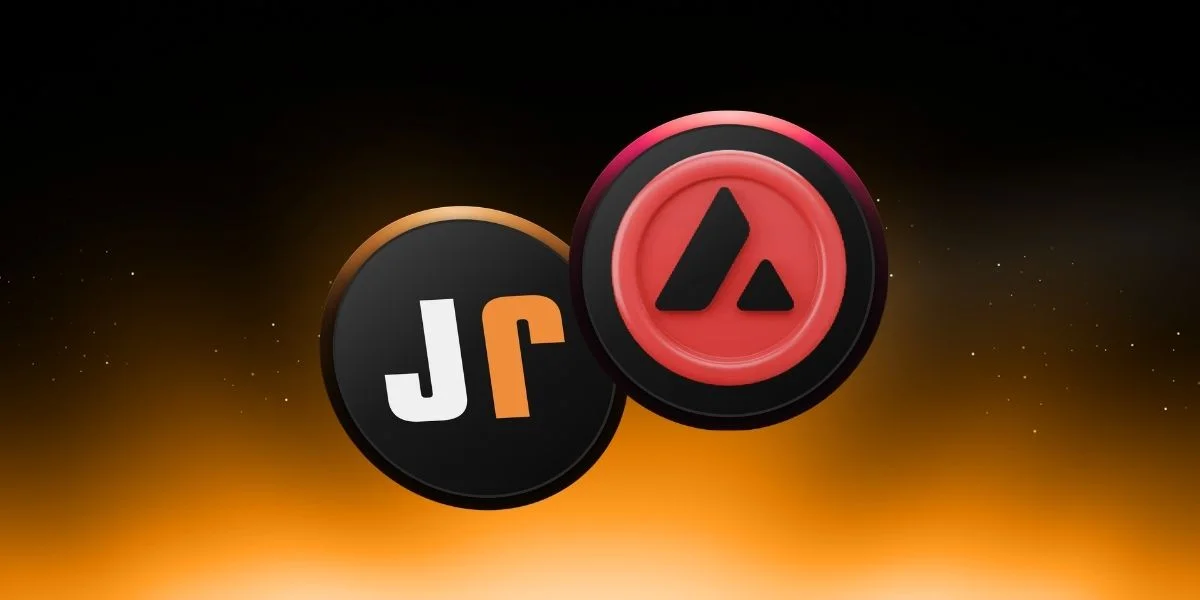
New Moves in Corporate Crypto Treasuries: Billion-Dollar Purchases in BNB, Ethereum, and Bitcoin
Institutional investors in the cryptocurrency market are increasingly aggressive in their treasury management strategies. Three major companies listed on Nasdaq and the NYSE have recently attracted attention with their purchases totaling billions of dollars in BNB, Ethereum, and Bitcoin.BNC Makes $160 Million BNB InvestmentBNB Network Company (formerly CEA Industries Inc.), traded on Nasdaq under the ticker symbol BNC, has acquired 200,000 BNB tokens, becoming the world's largest institutional BNB treasury holder. This $160 million purchase follows a $500 million private equity raise in partnership with 10X Capital and YZi Labs.The company is pursuing an aggressive strategy by focusing its treasury entirely on BNB. BNC plans to direct its remaining capital toward additional BNB purchases and, by exercising its option of up to $750 million, bring the total investment to $1.25 billion. The addition of Galaxy Digital co-founder David Namdar as CEO and the addition of former CalPERS CIO Russell Read to the team demonstrate the commitment to this transformation.BNB has 250 million users and an average daily trading volume of $9.3 billion. Increasing on-chain activity, deflationary token burns, and a potential BNB spot ETF are among the potential catalysts that could increase institutional interest.BitMine Adds $4.9 Billion in Ethereum StockpilesEthereum-focused treasury management company BitMine Immersion (BMNR) announced that it has increased its ETH holdings to 1.15 million, reaching a reserve of approximately $4.9 billion. This amount makes the company the world's largest institutional Ethereum treasury.The company engaged in an aggressive acquisition campaign during the summer. Last week, BitMine held 833,000 ETH and added 317,000 ETH ($1.3 billion) in just one week. BitMine President and Fundstrat co-founder Tom Lee stated that Ethereum is experiencing a "2017 Bitcoin moment," predicting that regulatory developments and institutional use cases could push the price to $30,000.Michael Saylor Makes New Bitcoin MoveOn the Bitcoin front, Michael Saylor's company, Strategy (formerly MicroStrategy), known for its "Bitcoin treasury" model, announced the purchase of 155 BTC for $18 million. This brings its total Bitcoin reserves to 628,946 BTC. The company's total holdings cost $46.09 billion, with an average purchase price of $73,288. While this purchase is one of Strategy's smallest of the year, it follows last week's record purchase of 21,021 BTC ($2.46 billion). The company is planning a new $4.2 billion stock offering and aims to use this funding to acquire more BTC.
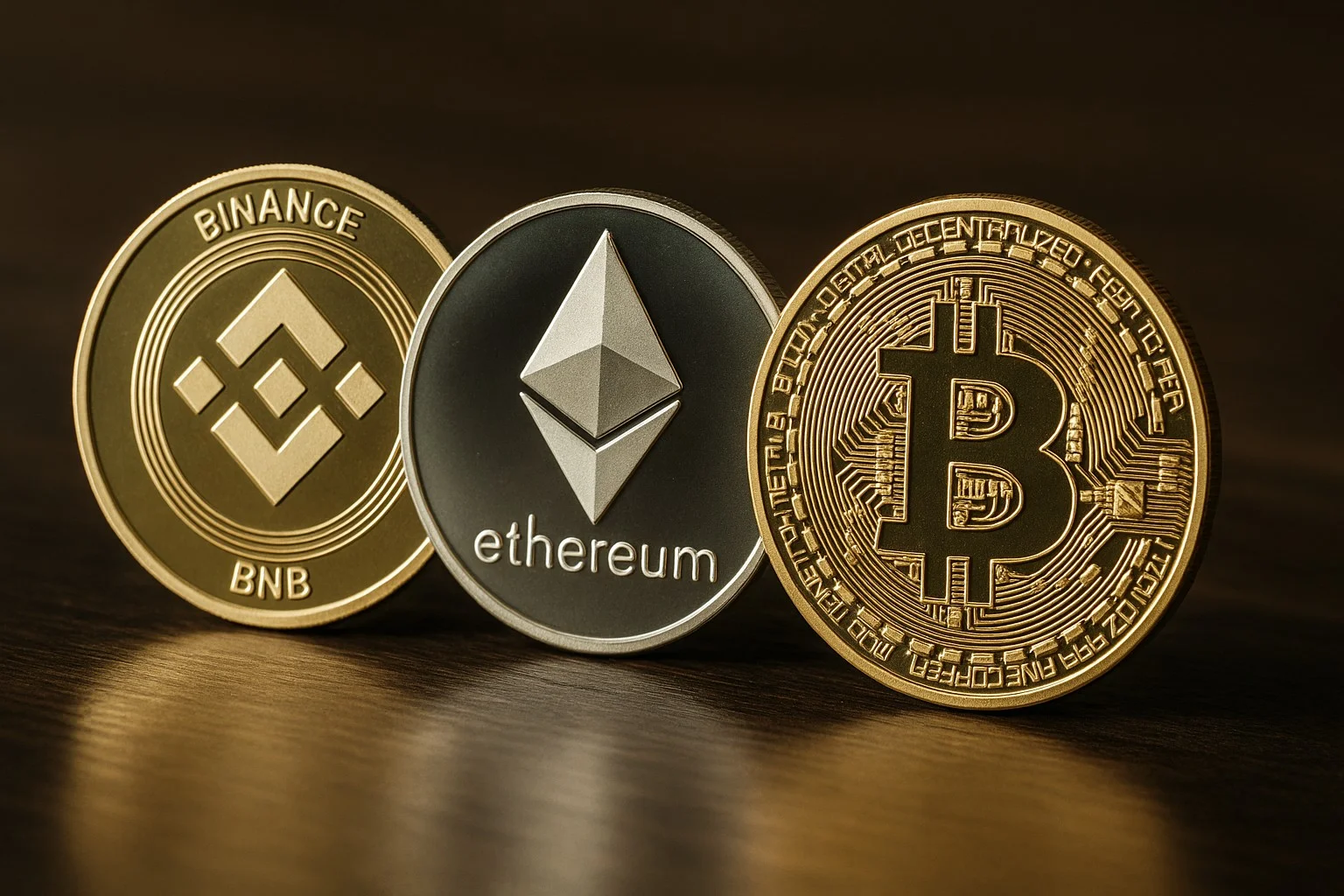
Nasdaq-Listed Company to Establish WLFI Treasury by Selling Shares
ALT5 Sigma Corporation (traded as "ALTS" on Nasdaq), a crypto asset trading and payment solutions company, announced the signing of a two-phase stock sale agreement worth up to $1.5 billion. The sale comprises both a Registered Direct Offering and a Private Placement. A total of 200 million shares or share equivalents will be sold at a price of $7.50 per share.According to the company's statement, the lead investor in the private placement will be World Liberty Financial, Inc. (WLFI), with payment in WLFI tokens. This will give ALT5 approximately 7.5% of the total WLFI offering. The proceeds will be used as part of its cryptocurrency treasury building strategy. These funds will also be used to resolve existing litigation, pay down debt, strengthen operations, and provide general working capital.Notable Names on the Board of DirectorsUpon completion of the sale, there will be significant changes to the ALT5 board of directors. WLFI's Co-Founder and CEO, Zach Witkoff, will be appointed chairman of the board. Eric Trump, son of former US President Donald Trump, will be a board member. WLFI Co-Founder and COO, Zak Folkman, will serve as an observing member, while Matt Morgan will be appointed the company's chief investment officer (CIO).According to ALT5 Sigma's statement, the sale was attended by leading global institutional investors and renowned crypto venture capital firms. The bids were determined at market price in accordance with Nasdaq rules. The process is expected to close around August 12, 2025.The company's core financial technology activities include the ALT5 Pay and ALT5 Prime platforms. ALT5 Pay provides an award-winning payment infrastructure that enables global businesses to accept cryptocurrency payments, while ALT5 Prime enables institutional and individual investors to buy and sell crypto assets. The company has processed over $5 billion in crypto trading volume to date. Shared Goal with WLFI: Growth in DeFiWorld Liberty Financial operates as a protocol and governance platform that aims to make decentralized finance (DeFi) more accessible. Inspired by President Donald Trump's vision, WLFI aims to develop user-friendly DeFi tools.ALT5 Sigma is also considering continuing its biotechnology operations as a separate company under the name "Alyea Therapeutics Corporation." However, these future plans and WLFI's strategy are subject to change depending on market conditions and regulatory processes.This large-scale share sale and changes to the management team are seen as part of ALT5 Sigma's goal to strengthen its position in the crypto finance space. However, investors should be aware that, as emphasized in the company's official statements, various operational and market risks exist in implementing the planned strategies.
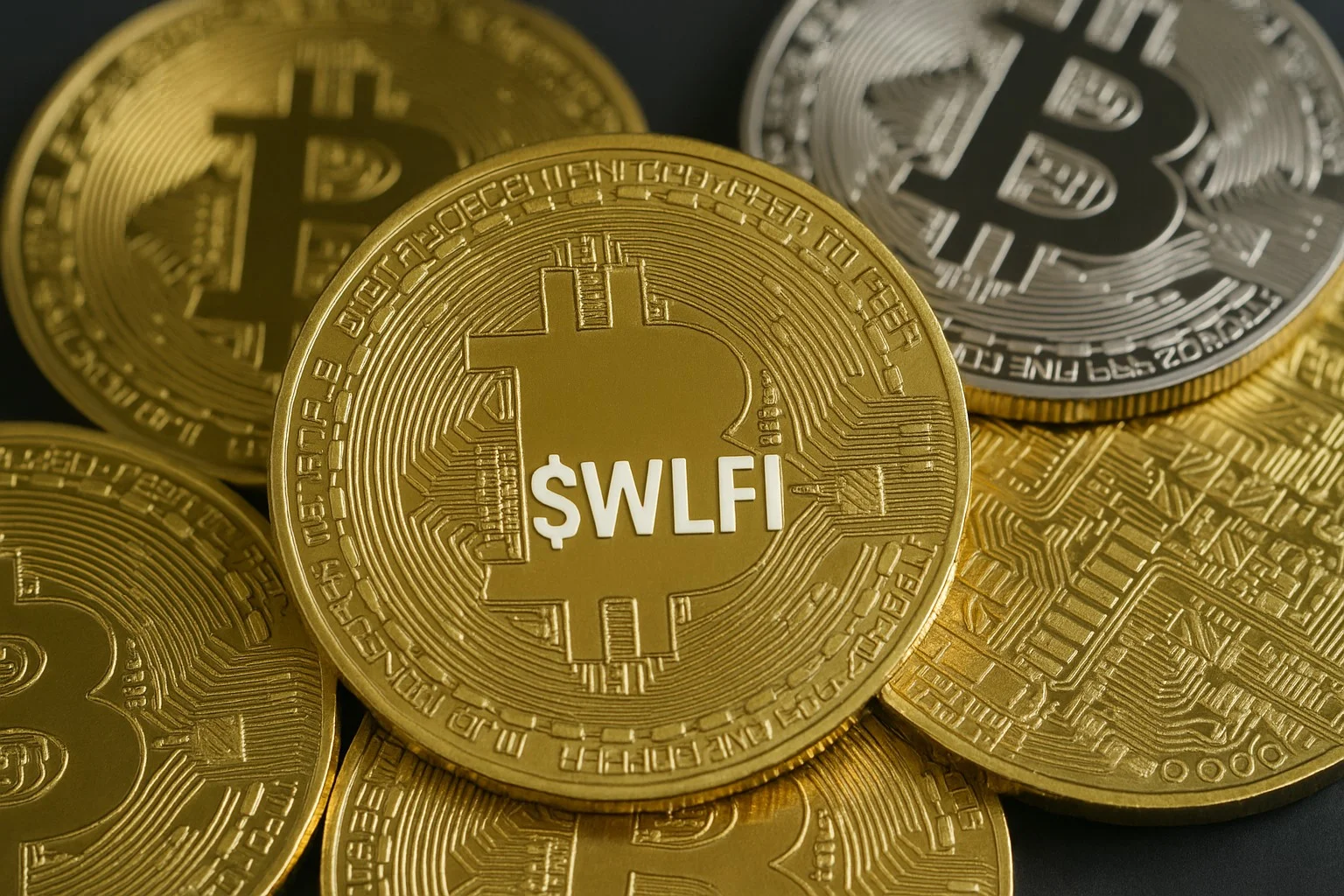
Half a Billion Dollar Inflow into Crypto Funds: Ethereum and Bitcoin Rebound, SOL and XRP Rise
Last week, cryptoasset investment products saw strong inflows again. According to CoinShares data, total net inflows globally reached $572 million. While weak US employment data triggered a $1 billion outflow in the early days of the week, the government's announcement that it would allow digital assets in 401(k) retirement plans led to a $1.57 billion inflow in the second half. Thus, the week closed on a positive note.Ethereum Leads, Bitcoin FollowsEthereum-based investment products dominated the week with $268 million in inflows. With ETH surpassing $4,000 for the first time in eight months, total inflows since the beginning of the year reached $8.2 billion, and assets under management reached an all-time high of $32.6 billion. This represents an 82% increase since the beginning of 2025.On the Bitcoin side, the two-week outflow streak ended. BTC investment products closed the week with $260 million in inflows. Spot Bitcoin ETFs in the US accounted for $253.2 million of this figure. Short Bitcoin products saw $4 million in outflows.Notable activity in altcoinsSignificant inflows were also seen in altcoin investment products. According to data provided by CoinShares:Solana (SOL): $21.6 millionXRP: $18.4 millionNear: $10.1 millionCardano (ADA): $1.5 millionChainlink (LINK): $0.7 millionStellar (XLM): $0.6 millionIn contrast, multi-asset products saw $3 million in outflows, and Sui saw $3 million in outflows. Regional breakdown: US leads, Europe negativeThe strongest regional inflows came from the US. The US led the week with $608 million in net inflows, followed by Canada with $16.5 million and Australia with $7.9 million. Hong Kong also contributed $1.4 million positively.Europe, on the other hand, was more cautious. Germany, Sweden, and Switzerland saw a total of $54.3 million in outflows. Germany recorded net outflows of $33.5 million, Sweden $16.5 million, and Switzerland $1.1 million.iShares Leads the Week Among ProvidersBy provider, iShares/USA took the largest share of the week with $294 million in inflows. Bitwise was in positive territory with $95 million, and Grayscale $87 million. ProShares saw $35 million in inflows, while Fidelity saw $55 million, ARK 21Shares $6 million, and CoinShares XBT Provider AB saw $16 million.Overall, despite the quieter trading volume during the summer months, optimism brought on by 401(k) regulation significantly boosted investor appetite. Ethereum's record levels, Bitcoin's recovery, and new fund inflows into altcoins indicate that the market outlook may remain positive in the short term.
